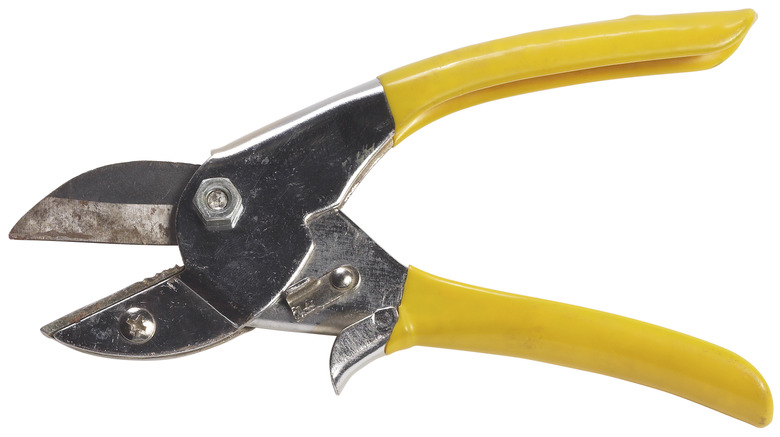When Is The Best Time To Prune A Tea Olive?
Though a few varieties bear showy flowers, tea olive (Osmanthus spp.), also known as sweet olive, produces blooms that fill a garden with fragrance rather than color. Pruning the shrub, which is evergreen in U.S. Department of Agriculture plant hardiness zones 7b to 11, at the wrong time can eliminate those sweet-smelling blossoms. The best timing for pruning the shrub depends on the way you use tea olive in your landscape.
Step 1
There are more than 15 tea olive species and numerous named cultivars, widely grown where winter temperatures do not often dip below zero degrees Fahrenheit. The shrubs grow best in full sun in well-drained, average soil; they don't flower as well and tend to have sparse foliage in the shade. Members of the olive family, they do produce purplish olive-like drupes if flowers aren't pruned away. The fruit attracts birds to the garden. Many tea olives can grow into small trees, up to 30 feet tall depending on species, but are commonly found from 6 to 12 feet tall in landscapes. The shrubs are not considered invasive and are seldom bothered by pests or disease when grown in their preferred conditions.
Annual Pruning
Step 1
Most tea olive varieties bloom on old wood, meaning they get their annual pruning after they bloom. Annual pruning consists of removing dead, broken and crossing branches, thinning congested growth and shortening stems for height control or to encourage bushier growth. Fragrant tea olive, or sweet olive (Osmanthus fragrans), can bloom off and on nearly year-round, so time pruning to follow peak bloom, which is fall through early winter in most cases. Tea olives generally develop a strong, treelike structure with branches off one to three trunks without much help, so it's fine to skip an annual pruning if your plant is lush and a suitable size.
Step 2
Step 3
- There are more than 15 tea olive species and numerous named cultivars, widely grown where winter temperatures do not often dip below zero degrees Fahrenheit.
- Tea olives generally develop a strong, treelike structure with branches off one to three trunks without much help, so it's fine to skip an annual pruning if your plant is lush and a suitable size.
Hedges
Step 1
Small-leafed tea olives are often trained as formal hedges. The best time for pruning a tea olive hedge is in the summer after new growth has slowed. Burkwood osmanthus (Osmanthus X burkwoodii), suitable for USDA zones 7 through 10, is a common hedge because of its dense foliage. Holly tea olive or false holly (Osmanthus heterophyllus) has small, dense foliage that is spiny when young and is recommended as a privacy hedge in USDA zones 7 through 9. Delay pruning false holly hedges until after they flower in the fall if you don't want to lose the fragrant flowers. Cut formal hedges so they are wider at the base than the top. For a more attractive tea olive hedge, go back over them after shearing with hand pruners to remove leaves clipped in half and twig stubs, and to thin small areas throughout the canopy to let in light and air.
Step 2
- Small-leafed tea olives are often trained as formal hedges.
- For a more attractive tea olive hedge, go back over them after shearing with hand pruners to remove leaves clipped in half and twig stubs, and to thin small areas throughout the canopy to let in light and air.
Renewal Pruning
Step 1
A neglected tea olive has a tendency to get leggy — lose leaves at its base — and looks more like a small tree than the thick, glossy shrub that once provided a living screen. Tea olives can generate growth even on mature stems with leaves only at the canopy when you cut them back hard. Renewal pruning is the exception to the rule of pruning after bloom. Because the stress on the plant is greater with this drastic pruning, which calls for removing one-third of the oldest stems to the base and shortening the remainder by one-half, it is best accomplished in late winter to early spring when temperatures are cool and the plant is primed for new growth.
References
- Lewis Ginter Botanical Gardens: Planting for Fragrance: Osmanthus
- Landscape Plants for Eastern North America; Harrison L. Flint
- Texas A&M AgriLife Extension of Bexar County: Sweet Olive
- University of Florida Extension: Osmanthus Fragrans: Sweet Osmanthus
- Monrovia: Variegated False Holly
- Monrovia: Burkwood Osmanthus
- The American Horticultural Society's Pruning and Training; Christopher Brickell and David Joyce
